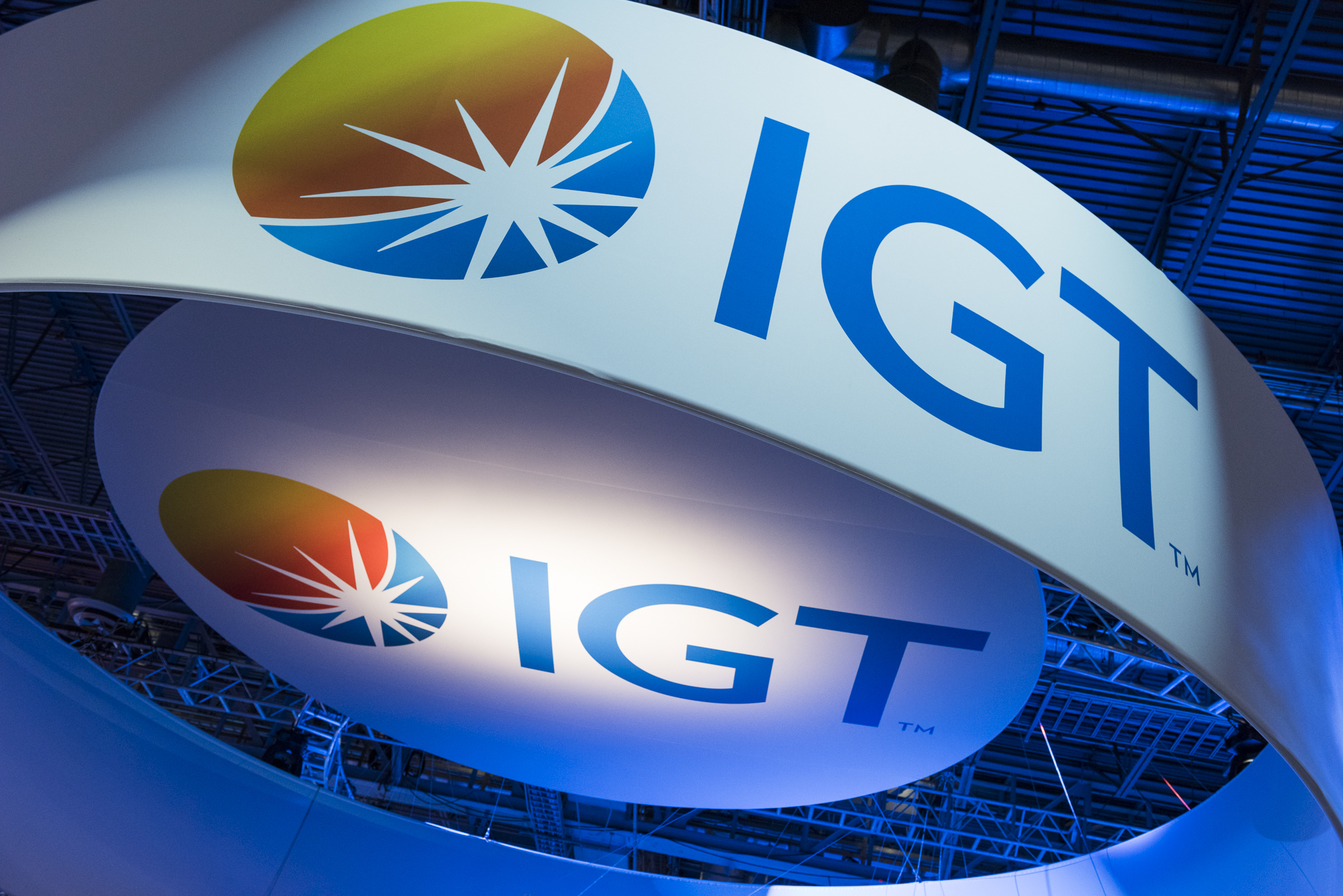
Modern Branding: It’s About Relatability
January 12, 2018
Is Branding Dead?
If you’re a marketer or a business leader and you keep up with the latest perspectives, it’s hard to come away without thinking that branding as we know it is dead.
Many hold that with the maturation of search and the ubiquity of social media, the tools we all learned in graduate school and leveraged in our professional roles are no longer relevant for the demands of our new world. Engaging communications have been supplanted by fulfilling experiences as the prime marketing focus for today’s business leaders.
I think this is right … mostly.
Engagement & Loyalty Decisions
There’s no question that our clients/consumers/customers have changed the process they move through to make their buying decisions with the enhanced utility delivered by search and social media. We see this clearly through the customer journey mapping work we do.
What I’m not convinced is whether the factors contributing to their decision have changed dramatically.
Today’s targets still need to reach three key conclusions:
- “Is it right for me?”
- “Is it best for me relative to alternatives?”
- “Does it deliver to my expectations?”
There’s no question that how they go about reaching these conclusions has changed and therein lies our challenge.
Experience or Branding?
“Does it deliver to my expectations?” is certainly answered through experience. The feel and performance of the product, the helpfulness of the service, the comfort from the feedback they get, both extrinsically and intrinsically all contribute to our targets’ ability to reach this conclusion. The more expectations are met and exceeded, the more people are willing to share their experiences with others and do it again when the need arises.
“Is it best for me, relative to alternatives?” is answered through a combination of experience and the influence of those trusted by our targets – friends and other users. If we’ve done our work well, they’re also interested in what we have to say about our offer. Testing, evaluating, studying the experience of others all tip the scale in our favor as the target is making the final purchase decision. Again, experience is the prime catalyst for this decision. But, if we are trusted, our communications can be influential as well.
This brings us to the first very important decision – “Is it right for me?” There’s no question that our targets’ experience and the experience of others influence this gating decision. But, before experience begins its influence, we need to establish a sense of relevance to jump start the active evaluation process.
This is where branding and marketing can still play an important role.
Universal Drivers of Demand
Recent research and an analysis of drivers of demand across high consideration b2b and b2c categories reveals that a sense of relevance is built in a series of steps.
The foundation is perceived competence – does it know how to do what I need to get done? Does it do it well?
The next layer is empathy – do they demonstrate an understanding of me and my needs? Do they get people like me?
Basic trust is fostered by establishing competence and empathy. Here our targets begin to give us “the benefit of the doubt” and they are open to what we have to say and do, subject to the test of experience.
The ultimate step – Confidence – is built upon the foundation of competence and empathy, and the validation of trust.
These four factors influence the “right for me” decision and help to establish the foundation for the “better than alternatives” decision. Each are shaped by direct experience and the experience of others, but they are also influenced significantly by the Modern Branding work we do to establish the foundation of relevance – “relatability.”
Relatability
Brand “relatability” is a built through a combination of perceived Competence & Character.
Again, competence is simply, “can they do what I need them to do?” Branding can help establish competence through story telling that helps our targets understand what we do, how we do it and importantly why we do it.
Character builds on competence to define who we are and will be in the context of a budding relationship. Branding helps to shed light on character by expressing our personality and our style of interaction. It helps our targets take measure of our fitness for them – trustworthiness, sincerity, empathy and loyalty – and encourages them to suspend their natural skepticism.
Relatability is also enhanced though freshness. As is the case in any relationship, freshness attracts and refreshing reinvigorates interest. Branding is uniquely suited to establish and sustain a sense of freshness that keeps our targets willingly engaged.
Modern Branding Drives Attention & Action
Today, it is commonly understood that branding without experience leads to likely failure. I would hold that the opposite is true as well. Experience alone can’t carry the burden of establishing relatability. The two must work in concert to fulfill the process our targets move through in making their engagement, purchase and loyalty decisions.
So, in my mind, branding isn’t dead. It’s different … and still must be mastered to build the relatability required to stimulate attention and drive the actions needed to grow and sustain our business.
Posted under: Branding Strategy, Changes in branding, Demand Driving Strategy, Marketing Strategy

Relationship Brands: Branding’s Next Chapter
October 11, 2016
As millennials become more influential than boomers, branders are quickly realizing that current practices need to be rethought to meet the demands of this transformative cohort.
Recent studies reveal that millennials are demanding brands to develop more individualized relationships http://catalystbranding.com/blog/millennials-transforming-branding/, but there’s little consensus around what that actually means for the practice of branding.
Stepping back, it’s clear to me that the answer lies in better understanding the notion of relationships.
Millennial relationships are digital based. These relationships seamlessly flow between virtual and physical worlds. Interaction is as much through text and social media tools as it is through face-to-face experiences.
In this digital world, the distinctions between people and entities blur. Millennials expect the entities they interact with to relate to them in the same fashion as the individuals in their lives.
Relationship mores shape expectations regarding behavior in the digital world as they have through history in the physical world. Examining these mores closely provides the clues needed to build the type of relationships required to fulfill millennial demand.
Trust & empathy are the foundation
As a starting point, it’s been true through time that trust and empathy provide the foundation for sustained relationships. Answering the “Can I trust you?” and “Do you get me?” questions help to breed the confidence so critical to building meaningful, long-term relationships.
Role defines strength
The difference between meaningful relationships and mere acquaintances is often determined by the role that relationship plays in our lives. The more meaningful the role, the more important the relationship. Relationship brands must understand the roles that are needed and be very clear as to the role they wish to play in the lives of their millennial customers.
Personality differentiates
Personality is an underleveraged differentiator. Think of your circle of friends. What distinguishes one from another? Often it’s personality that defines the difference. Relationship brands need to learn to use their distinctive personality as a means for standing apart.
Interaction behavior must change
Relationship mores are very clear when it comes to acceptable and unacceptable ways of interacting. Dominating conversations, talking too much, talking only about yourself and constantly interrupting are all unacceptable relationship behaviors. Yet these characterize most brand behavior in advertising, promotion and social media. Relationship brands need to transform these interaction styles.
Doing beats saying
In a good relationship, doing is more important than saying. People who promise and fail to deliver are universally derided. Relationship brands need to make delivery the priority.
Staying fresh is key
Finally, great relationships evolve through time to stay relevant in the lives of the participants. Relationship brands need to anticipate how customer needs will transform as the relationship progresses in order to stay fresh and relevant through time.
I find it amazing how often a return to fundamentals can provide the insight needed to navigate major inflection points. When it comes to my world of branding, a re-examination of the fundamentals of relationship behavior provides real insight as to what brands need to stop doing and what they need to begin doing once again in order to be right for the expectations of a significant new cohort.
Millennials demand relationship brands. This simple lens can help us discover just how to be the type of brand that will be right for them, both now and into the future.
Posted under: Branding Strategy, Changes in branding, Demand Driving Strategy

How Millennials Are Transforming Branding
September 21, 2016
Traditional Branding On The Cusp of Disruption
Several studies reveal that traditional marketing and branding disciplines are losing their impact when it comes to serving millennials. Credibility and differentiation are no longer earned simply through what we say. Instead, they’re established by what we do and what others say about us.
How Millennials Decide
Millennials make purchase decisions in a manner uniquely theirs:
They learn as much as they can
They share with their trusted network to gather a consensus of opinion
They strive to forge a two way relationship
They demand discussion and responsiveness
They’re drawn to the authentic – those who do what they say and are true to what they promise
They’re motivated by customized “deals”
“Value” is the prime driver
The Role of Brand is Different for Millennials
The role of brand is about shaping a narrative that defines who you are in a potential relationship:
What you believe
Why you exist
What you do to deliver on this reason for being
How you do it
Personality is more critical than ever:
Personifies the brand
Humanizes the relationship
Shapes communication style – verbal and visual
Guides behavior – relating, teaching, solving, delivering
Selling is bad. Sharing and teaching are good.
Millennials seek to be better equipped to make the decision themselves. They don’t want others making the decision for them and telling them what to do.
Branding is necessary, but no longer sufficient
Millennials need to be engaged as they live. Interrupting them and forcing them to listen to you turns them off. This is one of the major reasons so many are turning away from cable to streaming content. Advertising as we know it is no longer the most effective engagement mechanism.
The new challenge is capturing their attention in the context of how they live. Giving them the information they need to teach themselves and allowing them the freedom to engage with you as they prefer through the channels they choose to use.
If you’re successful in engaging them, they will demand an active dialogue. They will expect you to shape your offer for them based upon what you’re learning in that process.
They will share intensely. If they see you as right for them, all of their friends will know about you and will be encouraged to give you a try. If, however, you turn them off, then rest assured that all in their network will know about it.
Relevance continues to be an important driver. But the definition of relevance is expanded to include both what you offer and who you are in the context of a potential relationship.
Authenticity makes or breaks a relationship. “Are you true to who you say you are?” Is the core question millennials constantly ask. This is the foundation of the new trust.
Responsiveness is also key. Do you hear me and are you willing to show me how much you’re prepared to shape your offer for me based upon what you know about me?
In Conclusion
Branding, engagement and delivery are all one in the same for millennials. They want to form a relationship with an authentic source of value who will commit to being true to their word in promise and deed, engage with them in an active dialogue, shape their offer to meet their desires, deliver in all the ways promised and reward them for their loyalty to you.
Posted under: Branding Strategy, Changes in branding, Demand Driving Strategy, Marketing Strategy, Success Driving Briefs

Need to Work On Your Brand? Coaching May Be The Best Way to Go.
September 13, 2016
Enhancing Brand Consulting Effectiveness
Since founding Catalyst five years ago, we’ve been working to hone the effectiveness of traditional brand consulting engagements. Our clients told us that the big firms take too long and cost too much. They’re seeking a faster and more cost effective alternative.
We were able to fulfill their requests by delivering a new model that actually increased outcome quality through a streamlined process that was both faster and less expensive. By giving clients complete access to the best minds in the firm – those capable of working both smarter and faster – we’ve been able to create business enhancing solutions in less than half the time, for a third of the fees the big firms are charging.
Coaching as an Alternative
Along the way, a select number of clients have started to ask for a new type of engagement. These clients have a strong staff with significant internal capabilities. They’re confronting a new reality where brand alone, while necessary, is no longer sufficient to build attention and engagement needed to spur demand. And they’re being asked increasingly to serve a C-Suite role that integrates marketing and culture to grow revenue and deliver a compelling customer experience.
These clients don’t need an outside firm to come in, do their work and deliver an externally produced branding solution. Instead, they seek external expertise to coach, guide and teach their internal staff to create their own integrated branding, marketing and customer experience solutions.
The Benefits of Coaching
This approach has many benefits. Most of all, because the internal team created the solution, they tend to be more committed to doing all it takes to make it successful. The process of taking ownership breeds the collaboration required to create truly integrated solutions across marketing and customer experience. Furthermore, the solutions tend to be more organic in that they are actively managed and easily honed to respond to internal & external catalysts.
Finding the Right Coach
The challenge lies in finding the right coaching partner. As with all other forms of coaching, a branding coach that follows a rote process for each and every challenge is the wrong way to go. Instead, it is important to find a coach who has the expertise to work within models and frameworks that are right for the individual firm. Most clients already have institutionalized frameworks. If that isn’t the case, most talented teams have experience with particular frameworks that will ease the developmental process. If neither is the case, the coach needs to be able to tailor the right framework to the firm’s needs given the nature of how decisions are made.
The Coach’s Role
First, the coach must guide the team through the process of defining the real business challenge and/or opportunity to be addressed in order to spur demand, ignite growth or neutralize competition.
Second, the coach helps the team to understand market psychology, identify inflection points, map strengths and weaknesses and determine territories for viable long-term positioning based upon relevance and differentiation.
Third, the coach guides the team to chart the customer experience by mapping the path to purchase and the journey to loyalty. Each touchpoint needs to be identified and evaluated. From this, the team determines the fit and strengths of the current brand identity system and frames a plan to retain, refine or transform the brand to fulfill the opportunity.
Fourth, the coach helps the leader shape the resourcing plan – coordinating internal resources and identifying best in class external resources to manage the process of creative exploration, refinement and finalization. The coach also plays a very important role with the C-Suite, reinforcing the leader’s recommendations and providing the context key decision makers need to evaluate proposed solutions.
Fifth, the coach guides the various teams through the process of creating execution plans for marketing and customer experience to optimize the paths to purchase and loyalty. In the process, the coach identifies key training requirements and works with the leader to develop internal team skills.
Finally, the coach works with the leader to institutionalize a program for success measurement, on-going evaluation, strategy refinement and new opportunity identification. This ensures a constant state of readiness and enables an organic go to market solution.
The Brand Coach – My Favorite Way to Engage
For me, this is a welcome new development. My most enjoyable and successful programs resulted from, or evolved into, this type of coaching relationship. The clients I’ve worked with would testify that this approach yields team buy-in and executional effectiveness more successfully than traditional models. It’s an approach best suited for the dynamic demands faced by today’s marketing organizations.
Reach out if you’d like to know more – david.martin@catalystbranding.com
Posted under: Branding Strategy, Changes in branding, Marketing Strategy

How to Convert Fresh Attention to Action
April 12, 2016
Now That I Have Your Attention …
Every once in a while, good fortune shines on your brand when an important event generates wide spread attention. Such was the case for Callaway this week when Danny Willett emerged as an unexpected winner of the Masters.
When this happens to you, what do you need to be ready to convert this attention into the action needed to expand sales?
Start by understanding your customer’s decision process
A quick review of the consumer decision-making process in your category will tell you exactly where to focus. For most prospects, new attention compels people to want to learn more about the brand. Some will go directly to your website. Others will need to be nudged to act on their new intentions.
Nudge with non-intrusive media
To nudge, you need to be where they are looking. Twitter, Facebook, Instagram, Pinterest, Snapchat and relevant information sites are all places your targets will be using to learn more about the event that helped to raise your brand’s visibility.
By participating in these important media outlets you’ll be in the right place to naturally influence your targets to take the actions needed to learn more about your brand. You won’t be interrupting them. You won’t be alienating them. Instead you’ll be working in the natural flow they use to learn more about what happened and participate in the debate.
Email can also an effective tool, but a bit more intrusive than social media. The good news is that email gives the consumer the option of clicking in only if they are interested.
Content to inform and answer important questions
Once they’ve been nudged, your targets will do what they normally do to determine whether what you have to offer fits their lives. They’ll want to learn what they need to learn to make a smart decision.
This is where powerful content comes in. You’ll want to help these targets understand why you exist, what you have to offer and how it is right for their lives. You’ll want to help them assess your value relative to what they’re already using and decide whether or not to give you a try.
Short information rich video content, how to lessons, and third party assessments should always be top of your list. Channel partner and influencer content are also extremely valuable. Consumer endorsement never hurts as long as it is credible. What we stand for videos are icing on the cake.
Determine the actions you need your customers to take
Your primary objective is to give your targets the information they need to decide to take action. That action could take a variety of forms ranging from making an on the spot purchase to beginning a more protracted purchasing process.
In the case of Callaway, this could take a variety of forms. Golfers could decide in the moment to buy Callaway branded gear or balls directly, from an online partner, at a big box golf store or from their club’s pro shop.
Or, they could decide to start the process of buying Callaway branded clubs either in the moment or following a thoughtful fitting process. Again, this could be through a variety of channel options including direct, an online partner, a big box golf store or their club’s pro shop.
In either case, regardless of the chosen path, success is enabled from a well coordinated, well orchestrated experience that is seamless both within and across channels.
Plan in advance for success
Which means of course, that all of this should be well planned and managed in advance. Like most everything else, prior preparation enables you to benefit from a momentary event that brings your brand significant new attention.
In the end, success is all about the effective orchestration of touchpoints along the customer journey to nurture the decision making process. Media and content are critical for both building and leveraging attention and converting this attention into an intention to act. Managing experiences across the channels then insures that consumers follow though on their intention and take the action needed to ensure your success. If the process is especially well run, these customers will tell others all about it so that your success will be compounded across their relationships.
So when good fortune shines on your brand, be sure you’re ready to make the most of its fleeting benefits. Hopefully, for Callaway, this week marks the beginning of a very lucrative year.
Let me know what you think.
Posted under: Branding Strategy, Customer journey mapping, Marketing Strategy, Social Media Strategy







